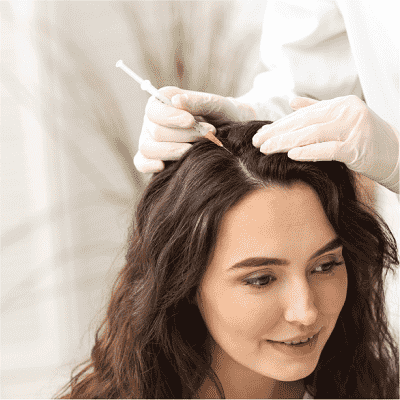Introduction
In recent years, the quest for effective hair regrowth treatments has led to innovative approaches in dermatology and cosmetic medicine. Among these, Platelet-Rich Plasma (PRP) therapy has emerged as a groundbreaking solution. PRP therapy utilizes the body’s own natural healing mechanisms to address hair loss, offering a promising alternative to traditional treatments such as topical medications and surgical interventions. This article explores the science behind PRP Hair Treatment in Oman, its application in hair regrowth, and the potential benefits and considerations associated with this cutting-edge therapy.
Understanding Platelet-Rich Plasma (PRP)
What is PRP?
Platelet-Rich Plasma (PRP) is a component of blood that contains a higher concentration of platelets than what is typically found in whole blood. Platelets are small cell fragments that play a crucial role in the body’s healing processes. They are rich in growth factors and proteins that are essential for tissue repair and regeneration.
How is PRP Prepared?
The preparation of PRP involves a process called centrifugation. During this process:
- Blood Collection: A small sample of the patient's blood is drawn.
- Centrifugation: The blood sample is placed in a centrifuge, a machine that spins at high speeds to separate its components based on density.
- Isolation: After centrifugation, the blood separates into three layers: red blood cells, a buffy coat containing white blood cells and platelets, and plasma. The PRP is extracted from the plasma layer.
PRP Therapy for Hair Regrowth
Mechanism of Action
PRP therapy promotes hair regrowth through several mechanisms:
- Stimulation of Hair Follicles: The growth factors in PRP stimulate dormant hair follicles, promoting their activation and leading to new hair growth.
- Enhanced Blood Supply: PRP increases blood flow to the scalp, ensuring that hair follicles receive the necessary nutrients and oxygen.
- Reduction of Inflammation: PRP has anti-inflammatory properties that can help reduce scalp inflammation, which is often associated with hair loss conditions such as androgenetic alopecia.
Procedure and Application
The PRP therapy process for hair regrowth typically involves:
- Consultation: The patient consults with a specialist to determine if PRP therapy is suitable for their condition.
- Preparation: A small amount of blood is drawn from the patient’s arm.
- Injection: The PRP is injected into the scalp at the level of the hair follicles. Multiple injections are usually administered in a grid-like pattern to ensure comprehensive coverage.
- Recovery: The procedure is minimally invasive, with most patients experiencing little to no downtime.
Benefits of PRP Therapy
Natural and Safe
PRP therapy uses the patient’s own blood, minimizing the risk of allergic reactions or rejection. Since it is a non-surgical procedure, it is generally considered safe with minimal side effects.
Efficacy
Clinical studies have shown that PRP therapy can lead to significant improvements in hair density and thickness. Many patients report visible results within a few months of treatment, with optimal outcomes often requiring multiple sessions.
Minimal Downtime
Patients undergoing PRP therapy typically experience a quick recovery, with most returning to their daily activities immediately after the procedure. Common side effects, such as mild swelling or discomfort, are usually temporary.
Considerations and Limitations
Not a One-Size-Fits-All Solution
While PRP therapy has shown promise, it is not suitable for everyone. Factors such as the underlying cause of hair loss, the stage of hair loss, and individual response to treatment can influence outcomes. It is essential for patients to have realistic expectations and consult with a qualified specialist to assess their suitability for PRP therapy.
Cost and Accessibility
PRP therapy can be expensive, and the cost may vary depending on the provider and geographic location. It is important for patients to consider the financial aspect and explore potential financing options if needed.
Conclusion
Platelet-Rich Plasma (PRP) therapy represents a revolutionary approach to hair regrowth, harnessing the body’s natural healing mechanisms to combat hair loss. Its ability to stimulate hair follicles, enhance blood supply, and reduce inflammation offers a promising alternative to traditional hair loss treatments. While PRP therapy has shown significant potential and benefits, it is important for individuals to consult with healthcare professionals to determine if it is the right option for their specific needs. As research and technology continue to advance, PRP therapy may become an even more effective and accessible solution for those seeking to restore their hair and confidence.





Comments